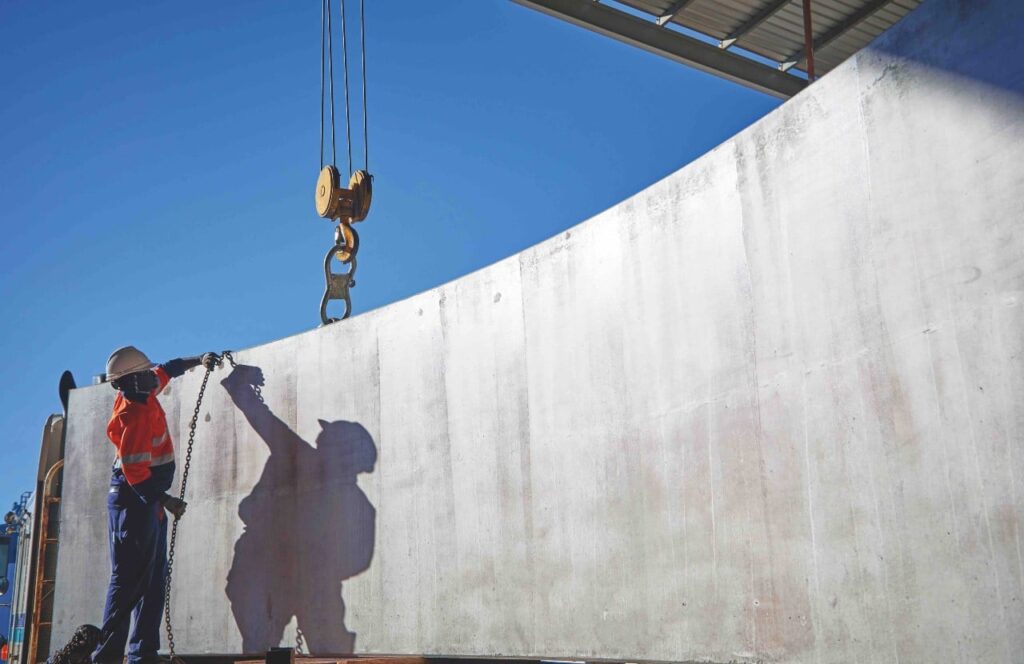Maximising risk mitigation with InEight
This post was originally published on this site
Roads & Infrastructure Magazine sits down with InEight Head of Account Management – EMEA Region, Jeff Quantrill, to discuss the challenges, potential improvements and available solutions associated with modern risk management processes.
The Australian infrastructure sector’s approach to risk management has changed over the past few decades.
Developments in technology and processes have enabled the largest compilation of key data to date, each set critical to forecasting and managing risks associated with project delivery.
Improving the efficiency, accessibility and costs associated with risk mitigation has long been a goal of global construction management software provider InEight.
The company’s expertise in delivering an advanced integrated platform for the construction industry has resulted in its solutions being used in more than 60 countries worldwide.
As part of its global reach, InEight has utilised its position in the market to take a closer look at risk mitigation in the United Kingdom, with a focus on applying integrated processes for proactive risk mitigation.

Using his knowledge in interconnected data and project management, Jeff Quantrill services the needs of clients across Europe, the Middle East and Africa as InEight’s Head of Account Management for the region.
Quantrill’s experience has opened the door to a variety of modern processes, some of which are mostly unfamiliar concepts to Australia’s roads and infrastructure industries.
One such element is the New Engineering Contract Version 4 (NEC4).
As Quantrill explains, while the concept of an NEC contract may be unfamiliar territory for some (in Australia particularly), the concept is “crucial” for creating a collaborative and proactive approach to risk management.
He adds that a part of this approach, an Early Warning Notice (EWN), is an essential cog in implementing a successful NEC4 agreement.
“Risk, by its very nature, is uncertain. That’s where the essence of the word originates,” he says.
“Like most contracts, the NEC contract includes a requirement for people to manage risks. At the beginning of the contract, both the client and the supplier will exchange their initial risk registers, which is mostly a standard practice anyway.
“The EWN is a way for either party to tell the other that they’ve found something that will likely impact the cost or the scheduling of the work. What makes it so powerful is that under this contract, there is a requirement for both parties to look at the risk, review it and work out what they’re going to do about it.
“You then mitigate the risk through a proactive process, not a reactive one.”
Related stories
Out with the spreadsheet
The market already provides a variety of systems and methods for collating and managing EWN documents, but Quantrill says some methods have become obsolete.
“The actual ability to manage risk has gotten better and better, however,” Quantrill says. “There are more tools now than ever before that are capable of doing so.”
Quantrill explains further that while electronic document management systems and spreadsheets help to digitise this process, there are far more effective solutions available. He says that while these methods can accurately depict data, having data without context is “useless.”
“What you can do now is take what was a paper-based process and digitise it into your document management, so it’s a straight move from paper to digital. That’s fine, but all that effectively does is make the traceability of that paper trail a bit easier,” he says.
“You’re still not able to actually leverage any of the capabilities of this data being in a digital system, apart from making these data easier to access and track.
“What we’re able to do with InEight is give that data a home to understand what the data means. We can help to put that data in the right place. Giving data context allows you to aggregate it and turn it into meaningful pieces of information.”
InEight Schedule, part of the InEight platform, has been developed exclusively for construction planning, scheduling and risk analysis.
The platform helps to rationalise the risk mitigation and planning process by encouraging collaborative planning between project stakeholders.
InEight recognised that not all companies utilise the same basic principles and processes. As such, the platform has been tailored for different applications and perspectives, such as owners and contractors.

“Every organisation will have processes that do not sit naturally in just document management, or just contract management,” Quantrill says. “If you have a piece of data in one area, that data is totally reusable in another. You don’t need to rekey data.
“There are very few programs out there that have this capability, [InEight makes this happen] with over 350 internal integrations and more on the way.”
Users can benefit from as much as a 90 per cent reduction in risk analysis time, while also centralising the visibility and improving the accuracy of mitigation planning.
InEight Schedule also harnesses the latest technology in Artificial Intelligence (AI) and Machine Learning (ML), inspired by the work of its creator, Dr. Dan Patterson. In his words, with AI “things become just a little bit less ‘fuzzy’ in the world of project management.”
Quantrill says combining the pattern-learning AI and ML with the skills and intuition of a project team can solidify project outcomes for owners and contractors alike.
“AI can look at a more actuarial function of risk management and take data over many years and say, ‘here are all the things that we know can happen.’ It can’t be an unforeseen risk if it’s happened before,” he says.
“When you’re building a schedule with InEight Schedule, you can view your project library, which is a history of all the projects you’ve done in the past, which have been recorded on the platform.
“InEight Schedule can then outline a project plan depending on that particular piece of work, scaled accordingly. It can suggest not only the activities, but also the potential times that each activity will take based off that previous history.”
Using AI and ML, InEight Schedule can also highlight potential risks associated with the project by analysing works of a similar nature that have been completed previously.
“The platform will proactively highlight these risks so that you can make a conscious decision as to which risks apply,” Quantrill says.
“It’s important because if a small mistake is made on a job, a human isn’t going to remember that two years later. It could’ve been a combination of factors, which could potentially turn into a really big issue on the next project.
“It’s a way of reducing that risk. And of course, if you reduce risk, you reduce uncertainty, which means you’re more likely to be on time and on budget.”
Quantrill says finding the balance between the use of AI and ML while retaining the right amount of human input will be the key to further improving risk mitigation practices.
“AI and human intelligence and human capability need to work together and collaborate for a better world,” he says.
“AI is good at detecting and taking advantage of its knowledge that it’s learned. But humans, at the moment, and probably for a good while yet, are very good at pattern recognition, and incredibly good at contextualising risk.”
As the Australian infrastructure sector’s approach to risk management evolves throughout the coming years, developments in technology and processes will help to better forecast and manage risks associated with project delivery.
InEight is dedicated to this evolution, continuously working to identify areas of improvement, and potential upgrades for its InEight Schedule platform.
This article was originally published in the April edition of our magazine. To read the magazine, click here.





Responses